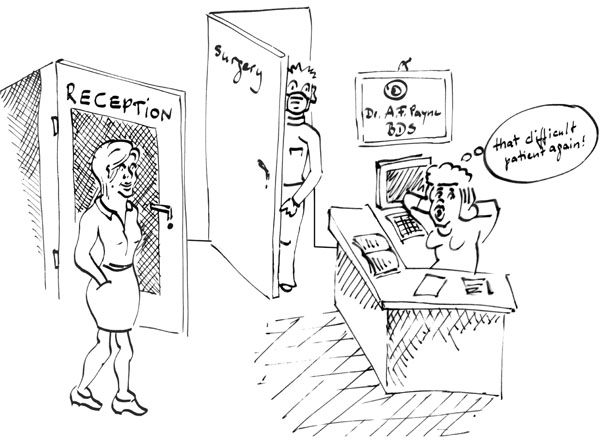Chapter 1
Orofacial Pain: An Introduction
Aim
The aim of this chapter is to discuss controversies associated with chronic orofacial pain (OFP).
Outcome
Having read this chapter the practitioner should:
-
appreciate the multiple sources of OFP and the frequency of presentation
-
understand the differences between acute and chronic OFP
-
appreciate the model used in the management of OFP.
What Constitutes an Orofacial Pain Complaint: Classification Issues
The OFP conditions comprise a group of acute and chronic pain states that affect the mouth and face. The majority of those affected will attend a dentist; however, only some OFPs are related to the teeth. The diagnosis of OFP may prove to be one of the most challenging and frustrating problems faced by the dental practitioner. In an ideal world, patients would present with complaints with their own signature characteristics. This is rarely the case. In many instances, there is a significant overlap in the presentation of OFP conditions.
An important distinction that should be made when dealing with OFP conditions is whether the pain is acute or chronic. In general, chronic OFP conditions have been present for three months or longer.
A variety of classifications have been developed to represent the multitude of pain states that may present as OFP. These have evolved through the American Academy of Orofacial Pain, the International Headache Society and the International Association for the Study of Pain. Although there has been tremendous progress in this area since the 1980s, further work is required to provide a universal classification system. A simple classification system of OFP conditions is set out in Table 1-1.
| Source | Types |
| Intraoral |
|
| Extraoral |
|
| Musculoskeletal |
|
| Neuropathic |
|
| Neurovascular |
|
| Psychological |
How Common is Orofacial Pain?
The commonest form of OFP that a dental practitioner encounters is toothache. A national study conducted in the USA showed that the overall prevalence of toothache in adults in the six months leading up to the study was 12.2%. In addition, this study estimated that 22% of the general population experienced OFP in any given six-month period. The commonest form of chronic OFP that a dentist will encounter is temporomandibular disorders (TMD). Population-based studies reveal that the rate of TMD is 8–15% in females and 3–9% in males. Incidence-based studies show that there are approximately two to four new cases of TMD per 100 people per annum. This contrasts to the incidence of trigeminal neuralgia, which has been estimated to be in the order of three to five new cases per 100,000 people per annum. The prevalence of chronic pain following successful endodontic treatment in a tertiary referral endodontic centre was 12%. The few epidemiological studies carried out on the general population estimated the prevalence of cluster headache to be 0.1%. In contrast, similar studies have estimated migraine prevalence to be approximately 18% for women and 6% for men. Therefore, when a patient presents complaining of OFP, it should be considered to be of dental origin until proven otherwise. When a dental component is not identified, non-dental sources must then be considered.
The Stigmatisation of the Patient with Orofacial Pain
When a patient presents complaining of pain and the source of the pain cannot be readily identified, or dental intervention does not eliminate the complaint, questions are often asked regarding the psychological state of the patient (Fig 1-1). This has given rise to situations where patients are unfairly labelled as “psychogenic”, or their pain is described as “psychogenic” pain. The vast majority of OFP conditions have a legitimate cause; however, dentists are sometimes not in a position to diagnose the problem accurately.

Fig 1-1 The stigmatisation of the patient with orofacial pain.
Stay updated, free dental videos. Join our Telegram channel

VIDEdental - Online dental courses


